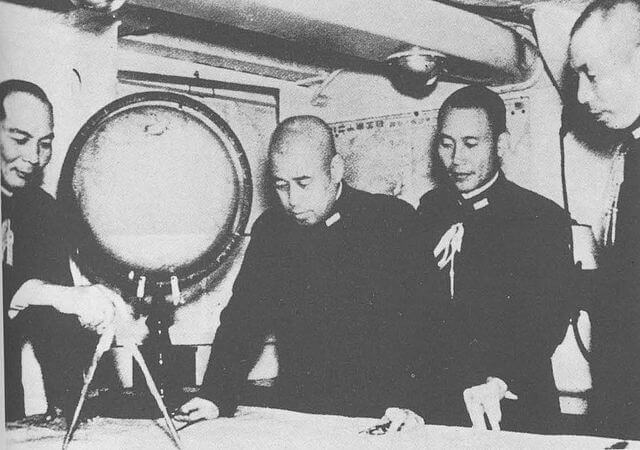Opposing the Pearl Harbor Attack: Japan’s Internal Struggle
Looking back at the events that unfolded on December 7th, 1941, it's reasonable to assume that all Japanese officials were supportive of the surprise attack. While the decision did have widespread support, it was far from unanimous. The attack on the United States came after a trade embargo was placed on vital Japanese imports, threatening the nation’s ongoing expansionism.
The Planner Has Doubts

Admiral Isoroku Yamamoto and staff
Discussions about the potential for an attack came long before the embargo, however, and the skeptics were headed by Admiral Isoroku Yamamoto. Ironically, though Yamamoto laid out the plan to strike Pearl Harbor, he also happened to be one of its most vocal opponents. Yamamoto knew the risks of attacking Pearl Harbor, not just to the fleet flying into Hawaiian airspace, but also to the overall Japanese ambitions. While those in favor of the attack believed it would keep the United States at bay, Yamamoto feared—correctly, as it turned out—it would simply enrage the nation and draw it into a war Japan couldn't win.
Powerful Voices in Favor of the Attack

Osami Nagano
While Yamamoto was vocally opposed to the Pearl Harbor attack, he was up against more powerful men who ultimately decided to go forward with the attack. Imperial Japanese Navy General Staff Chief Osami Nagano rejected Yamamoto’s concerns, arguing that negotiations with the United States were a waste of time. Supported by Minister of War General Hideki Tojo, Nagano spoke often about necessary military action against the nations that stood in their way in the Pacific, including the United States and European allies with colonies in Southeast Asia.
Both Nagano and Tojo feared giving in to demands laid out in negotiations with the United States would reverse Japanese advances made during the Second Sino-Japanese War. Above all, the proud nation feared a loss of face and morale.
The Decision Receives Royal Approval
The more Yamamoto expressed concern for the outcome of the attack on Pearl Harbor, the more unwavering Nagano became in his belief that it was necessary, and was Japan’s only possible course of action. By November 3rd, 1941, a month before the attack was launched, Nagano presented the attack plan to Emperor Hirohito for final approval. Two days later, the emperor announced his approval at the Imperial Conference, decreeing a December start date should negotiations with the US fall through.

Prince Takamatsu
After the announcement, more dissent for the plan arose, including that of Prince Takamatsu, Hirohito’s brother, who feared the navy would crumble after two years of war. The Lord Keeper of the Privy Seal of Japan, a close advisor to Hirohito, was also reluctant to go to war, advising the emperor to be absolutely sure that an attack on the American naval base in Hawaii was Japan's best course of action.
The End of Diplomacy
Despite the opposition to the attack, on December 7th, 1941, after a diplomatic solution couldn't to be found, Japan launched the surprise assault, killing 2,403 Americans. For the Japanese officials who were against attacking the United States, they had only the cold comfort of having been right.Within months of the start of the war in the Pacific, Japan was unable to fight off the Allied naval forces.







